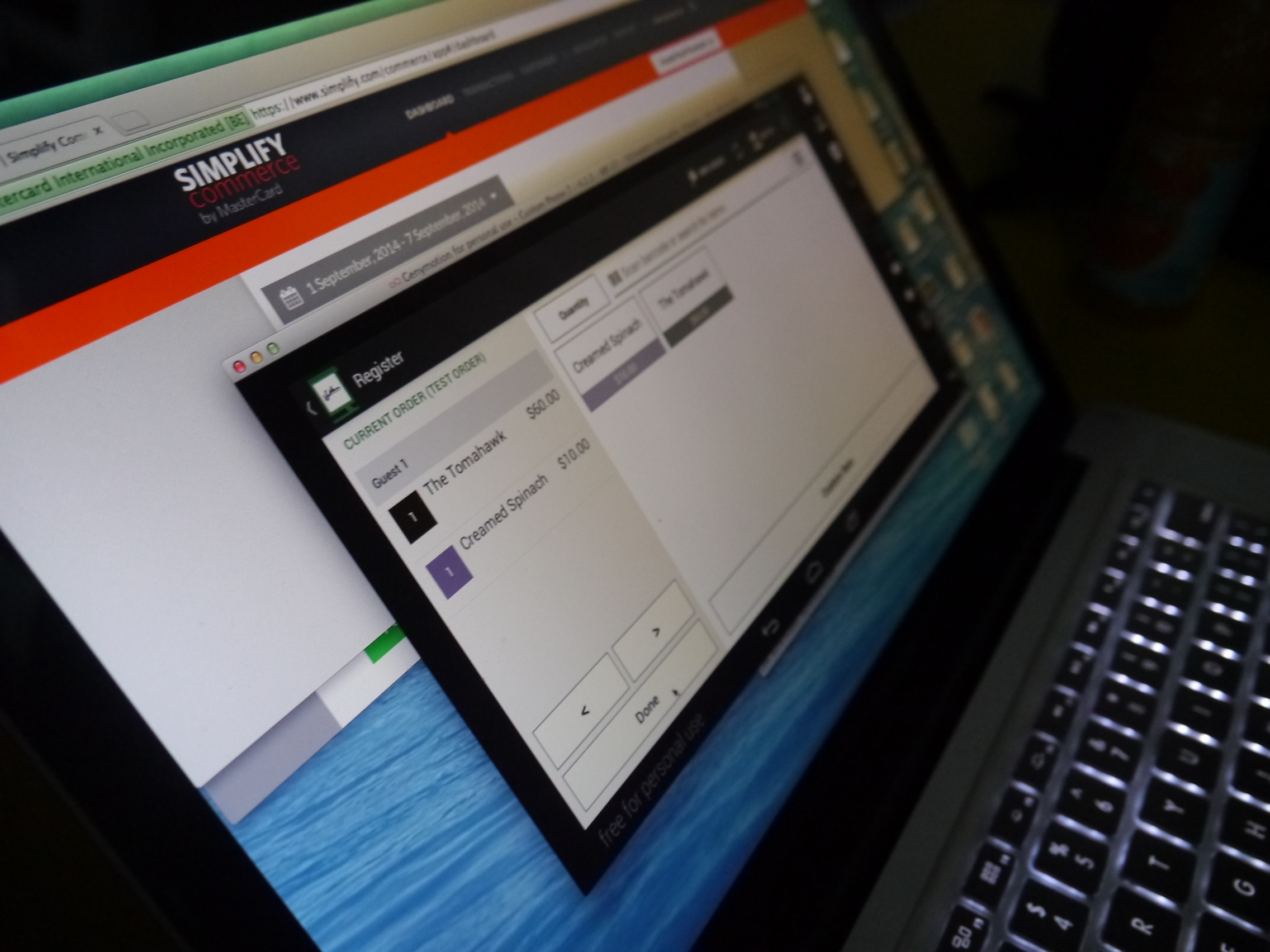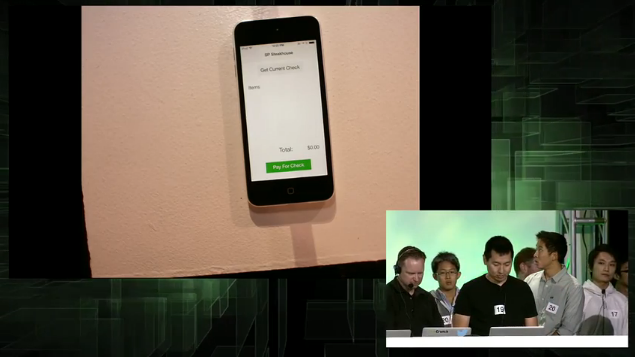It’s still pretty early days for beacon tech, but practical applications for the Bluetooth trigger hardware are set for big growth. Beacons can be embedded into all sorts of everyday objects linking them to smartphones and their users via a companion app.
Here at the 2014 TechCrunch Disrupt SF hackathon two-man hack team, Ray Ho and Mark Watson, showed off a simple but promising concept that combines $3-a-pop Bluetooth iBeacons with restaurant software Clover to make the process of waiting on tables more efficient.
The concept is to embed Bluetooth beacons into every restaurant table so that table occupancy can be remotely monitored via the restaurant’s point of sales software backend, i.e. rather than needing staff on the floor constantly checking and noting when new customers sit down.
“The whole idea is to integrate with the Clover tables application which is how restaurants handle tables coming in and out, servers if they’re busy, and what tables are ordering,” said Watson, demoing the SmartTables app which the duo hacked together overnight.
SmartTables detects when a user has entered the restaurant and checks them into the particular beacon-enabled table they have selected, after about 10 seconds.
At this point the restaurant can see within the Clover point-of-sales software interface that a table has been occupied and could send waitstaff over to take an order. But if the staff is all occupied the customer is able to place their food order via the app, and that info is pushed to the restaurant’s software.

One thing to note is that the app doesn’t necessarily replace human interaction — those who want their food order taken on-demand can order via the app, but people who want to, y’know, talk to a human, can just wait for a server to come to their table, safe in the knowledge that the restaurant knows they are waiting.
“We think the most interesting part is that you can handle almost everything on the customer side or the restaurant side. So if something gets busier and the customer is impatient they can just order something, or they can totally ignore the iPhone application and just do it as they normally do… It’s fluid,” added Watson.
The app also lets customers sum up how much they have spent at any point before choosing to make a payment.
“If you’re sitting at the restaurant and you want to say ‘I wonder how much I’ve spent; I’ve been eating a lot of appetizers’, you can get the current check, and then you can either pay for the check manually, a server can take your payment like they normally would or if you just get up and leave — which takes 10 seconds [to register] because it doesn’t want to be flaky and pretend you leave when you didn’t — we already have the user’s information stored on our servers, so it will go through MasterCard, check out, pay for it. And you can tell Clover that they’ve also paid for it,” said Watson.
The restaurant would then be notified via its point of sales software that the payment has been made.
“Right now people are using [beacon tech] in big outdoor venues like music venues and live sports, and they’re not really making that much use of the actual data — they’re just collecting it and seeing where users are going. So I think it’s interesting finding specific applications for iBeacons,” added Watson, who is also the founder of a fully fledged beacon analytics startup called DataSnap.
Check out the video below to see Ho demoing SmartTables on stage at TC Disrupt.
